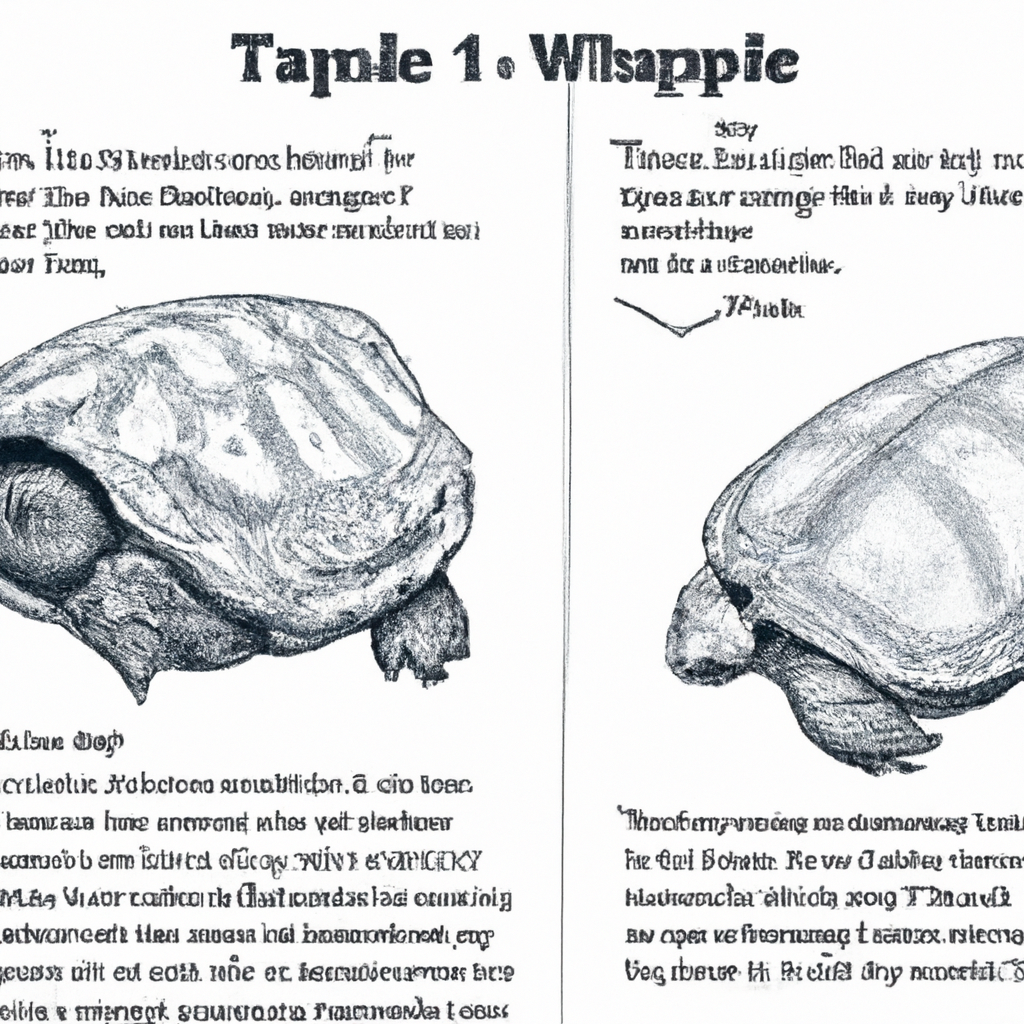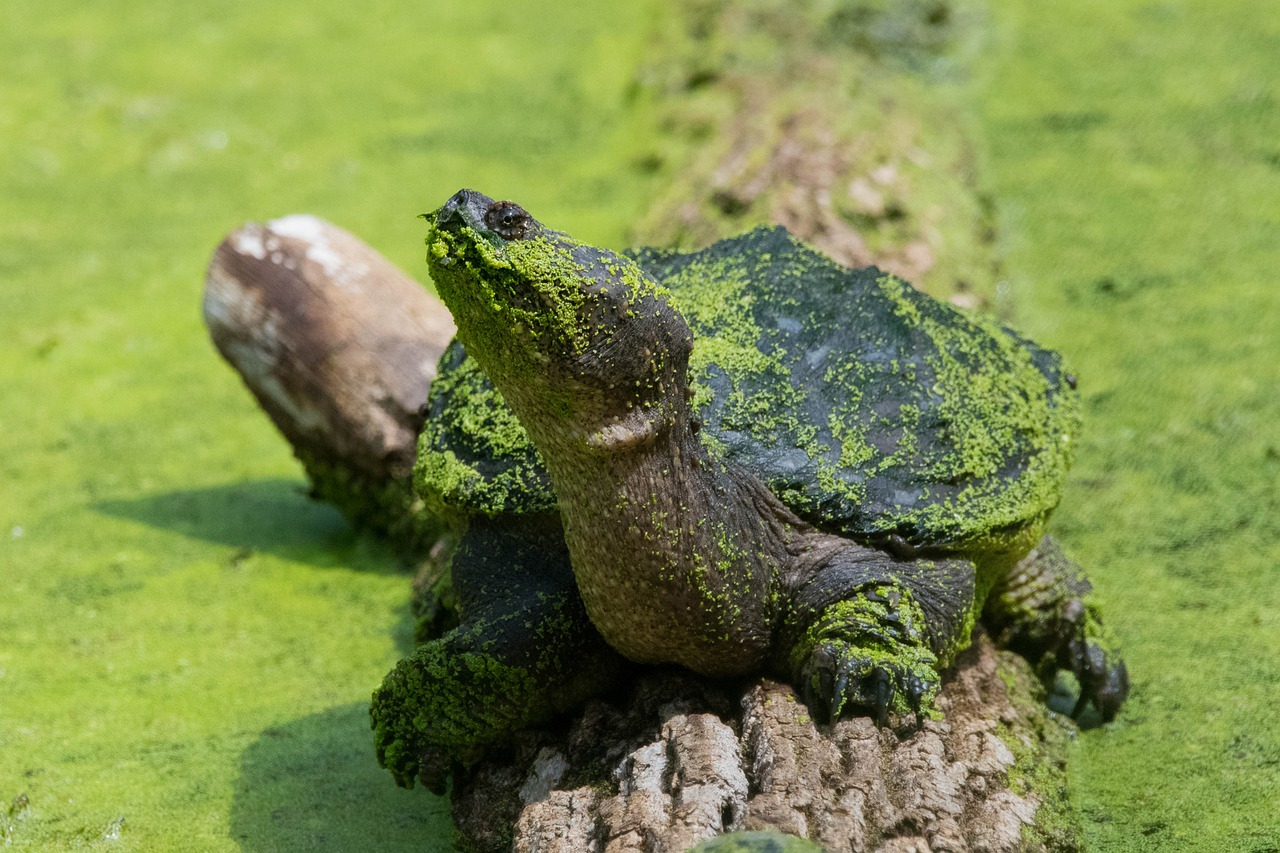Have you ever wondered what a snapping turtle looks like? Known for their distinctive features, snapping turtles are fascinating creatures found in freshwater habitats across North America. With their large shells, strong jaws, and rugged appearance, they are easily recognizable. But there’s more to these creatures than just their intimidating looks. In this article, we’ll explore the physical characteristics that make snapping turtles unique and remarkable. Get ready to uncover the secrets of these intriguing reptiles!
Physical Appearance of Snapping Turtles
Size and Weight
Snapping turtles are impressive creatures in terms of their size and weight. On average, adults can reach a carapace length of up to 18 inches (45 cm) and weigh between 10 to 35 pounds (4.5 to 16 kg). However, some exceptional individuals have been reported to grow larger, with carapace lengths exceeding 20 inches (50 cm) and weights exceeding 50 pounds (22.5 kg). These turtles are known for their robust build and their sheer physical presence.
Shell
The shell of a snapping turtle is one of its defining features. It is incredibly strong and offers excellent protection. Known as a carapace, it is comprised of bony plates that overlap and fuse together for added strength. Typically, the carapace is brown or black in color, with a rough texture that helps with camouflage. The shape of the carapace is notable as well, featuring a strong, elevated central ridge that tapers towards the edges.
Head
The head of a snapping turtle is distinctive and easily recognizable. It is relatively large in proportion to the body and has a pointed snout. The top of the head, known as the skull, is covered with a layer of smooth skin. The skin coloration can vary from dark green or brown to black, providing excellent camouflaging abilities when the turtle is submerged. Snapping turtles have well-developed eyes that are positioned on the sides of their heads, allowing them a wide field of vision.
Jaws and Beak
Snapping turtles are known for their incredibly strong jaws and hooked beak-like mouth. These powerful jaws are capable of delivering a forceful bite, and their sharp beak allows them to effectively tear prey apart. The upper jaw is typically longer than the lower jaw, giving the snapping turtle its menacing appearance. It’s important to exercise caution when interacting with snapping turtles due to their powerful biting capabilities.
Limbs and Feet
The limbs and feet of snapping turtles are well-adapted for their semi-aquatic lifestyle. Their limbs are strong and muscular, with each limb featuring five clawed toes. These claws are used for various purposes, such as digging nests, climbing, and catching prey. On land, snapping turtles can move relatively quickly with their stubby, sturdy legs, while in water, their webbed feet aid in swimming and maneuvering through their aquatic habitats.
Tail
Snapping turtles have long and muscular tails that are equally well-suited for both swimming and defense. Their tails can make up over half of their overall body length. The tail is encased in bony plates, similar to the shell, providing additional protection for this vulnerable area. Unlike land tortoises, snapping turtles do not retract their tails into their shells, as their shells lack the hinges necessary for tail retraction.
Skin
The skin of snapping turtles features a leathery texture and is covered in small, rough scales. This scaly skin provides another layer of protection and aids in their camouflage, blending in with the mud and vegetation in their natural habitats. The skin coloration can vary from olive green and brown to almost black, allowing snapping turtles to blend in seamlessly with their surroundings.
Coloration
The coloration of snapping turtles can vary depending on their environment and age. Juvenile snapping turtles usually have brighter hues, such as green or yellow, on their shells and skin. As they grow and mature, their coloration tends to darken and become duller, which aids in their ability to camouflage. The brown or black coloration of adults allows them to blend seamlessly with their surroundings, making them skilled ambush predators.
Sexual Dimorphism
Sexual dimorphism, or the physical differences between males and females, can sometimes be observed in snapping turtles. In general, male snapping turtles tend to have longer tails and larger heads compared to females. Additionally, males may exhibit certain physical characteristics, like elongated claws on their front feet and a shorter carapace, which aids in mating rituals and combat with other males. However, it is important to note that determining the sex of snapping turtles solely based on physical characteristics can be challenging, and examining internal reproductive organs is often required for accurate identification.
Young Snapping Turtles
Juvenile snapping turtles possess distinct physical traits that differentiate them from their adult counterparts. Their shells are typically lighter in color, with more vibrant patterns and markings. This increased coloration provides effective camouflage while they explore their aquatic habitats and evade potential predators. Additionally, young snapping turtles have a more delicate appearance, with softer shells and smaller beaks. As they mature, these traits gradually transform as they become well-adapted adults.
Habitat and Distribution
Freshwater Habitats
Snapping turtles primarily inhabit freshwater ecosystems such as rivers, ponds, lakes, and marshes. They are well-adapted to both stagnant and flowing water bodies, as they can survive in a wide range of aquatic environments. Snapping turtles are highly skilled swimmers, utilizing their webbed feet and streamlined bodies to navigate through water. While they spend the majority of their lives in the water, they also venture onto land for various activities.
Geographical Range
Snapping turtles are native to North America, specifically found in the United States and Canada. Their range extends from southern Canada through the eastern and central United States, as far south as Florida and as far west as Texas. The exact distribution of snapping turtles is influenced by factors such as temperature, water availability, and suitable habitats. Within their range, snapping turtles can be found in diverse ecosystems, from coastal wetlands to inland lakes and rivers.
Preferred Environments
Snapping turtles exhibit a preference for habitats that offer a combination of aquatic and terrestrial resources. They are most commonly found in freshwater habitats with abundant vegetation and ample opportunities for basking and sunning. Snapping turtles require access to water bodies for feeding, mating, and hibernation, while also relying on nearby terrestrial areas for nesting and basking. Ideal environments for snapping turtles include shallow bodies of water with muddy bottoms, submerged vegetation, and ample debris for cover.
Aquatic and Terrestrial Habitats
Snapping turtles are well adapted to both aquatic and terrestrial habitats, seamlessly transitioning between these two environments. They spend a significant portion of their time in water, where they swim and forage for food. In aquatic habitats, snapping turtles utilize their strong limbs and webbed feet to navigate through the water column and hunt prey. On land, they make use of their sturdy limbs to walk and dig nests for egg-laying purposes. This versatility in habitat usage is a testament to the remarkable adaptability of snapping turtles.
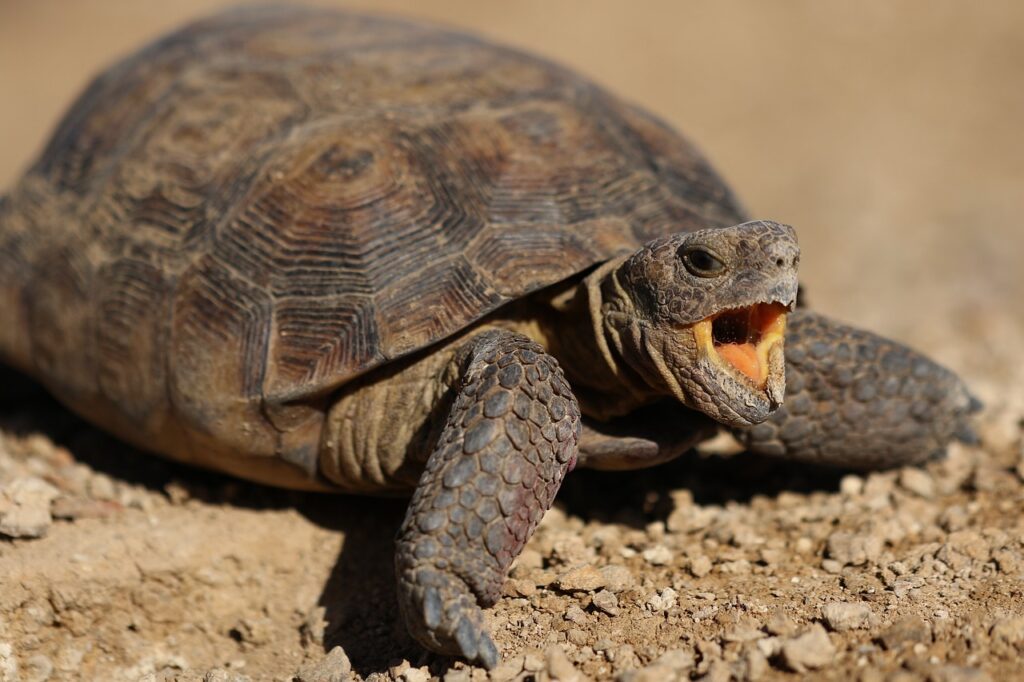
Diet and Feeding Habits
Carnivorous Diet
Snapping turtles are carnivorous creatures with a diverse diet. They are opportunistic feeders, meaning they will consume a variety of prey items that come in their path. Their diet primarily consists of aquatic prey such as fish, frogs, tadpoles, crayfish, snails, and small turtles. However, snapping turtles are not solely limited to a diet of water-dwelling organisms. They are also known to scavenge carrion, feed on small mammals, birds, insects, and even vegetation if the opportunity presents itself.
Predatory Nature
As apex predators within their ecosystems, snapping turtles play a crucial role in regulating prey populations. They are highly skilled hunters, using their keen senses to detect and locate potential prey. Snapping turtles are known for their patience, often lying motionless on the water bottom, waiting for an unsuspecting prey item to come within striking distance.
Prey Selection
Snapping turtles have a wide-ranging palate and an opportunistic approach to feeding. They are known to utilize their strong jaws and beak to seize and consume a variety of prey. While they are commonly associated with feeding on aquatic animals like fish and amphibians, snapping turtles will also target small mammals, birds, reptiles, and even carrion. They have been observed using their strong jaws to crack open the shells of mollusks and crustaceans, showcasing their versatility in prey selection.
Feeding Techniques
Snapping turtles employ various feeding techniques to capture and consume their prey. When an opportunity arises, they will swiftly extend their necks, using their strong neck muscles to snap their jaws shut with remarkable force. This rapid movement makes their bite incredibly powerful and can be dangerous for any unwary prey. Snapping turtles are also capable of engulfing their prey whole, using their beak-like mouths to grasp and swallow smaller prey items without the need to tear them apart.
Behavioral Characteristics
Solitary Nature
Snapping turtles are primarily solitary creatures, spending their lives in relative isolation. They are typically found alone, and encounters between individuals are often limited to territorial disputes or mating rituals. This solitary nature allows snapping turtles to have ample personal space within their preferred habitats, ensuring they have access to food resources and minimizing competition.
Aggressive Temperament
Snapping turtles are known for their aggressive temperament, particularly when threatened or cornered. While they may appear sluggish in their typical behavior, they can quickly shift into a defensive mode when they perceive a threat. Snapping turtles will often hiss, lunge, or snap their jaws when provoked, acting as an effective deterrent against potential predators or human interactions. It is essential to exercise caution and respect their space to avoid any negative encounters.
Territorial Behavior
Snapping turtles exhibit territorial behavior, particularly during the breeding season. Males establish and defend territories to attract females for reproduction. These territories can range in size depending on the availability of resources, and males will actively defend them against rival males. This territorial behavior can lead to aggressive encounters between males, resulting in physical combat and displays of dominance.
Basking and Sunning
Snapping turtles have a fascinating behavior of basking and sunning that can be observed in warm weather. After extended periods in the water, snapping turtles will seek out sunny spots on logs, rocks, or muddy banks to bask in the sun. Basking helps them regulate their body temperature and speeds up their metabolic processes. It also aids in the health of their shells, as exposure to sunlight helps prevent fungal and bacterial growth.
Hibernation
Snapping turtles undergo hibernation during the winter months. As the temperatures drop, snapping turtles bury themselves in the mud or find submerged areas in bodies of water where they become dormant. During hibernation, their metabolic rate decreases significantly, allowing them to conserve energy and survive in cold conditions. The length of their hibernation period can vary depending on the region and local climate.
Mating Rituals
Mating rituals in snapping turtles occur during the spring and early summer months. Males engage in courtship behavior to attract females for reproduction. This can involve various displays, such as head bobbing, tail vibrations, and circling the female. Males also release pheromones into the water to signal their presence to receptive females. Once a pair has mated, the female will seek out suitable nesting sites to lay her eggs, starting the next phase of the life cycle.
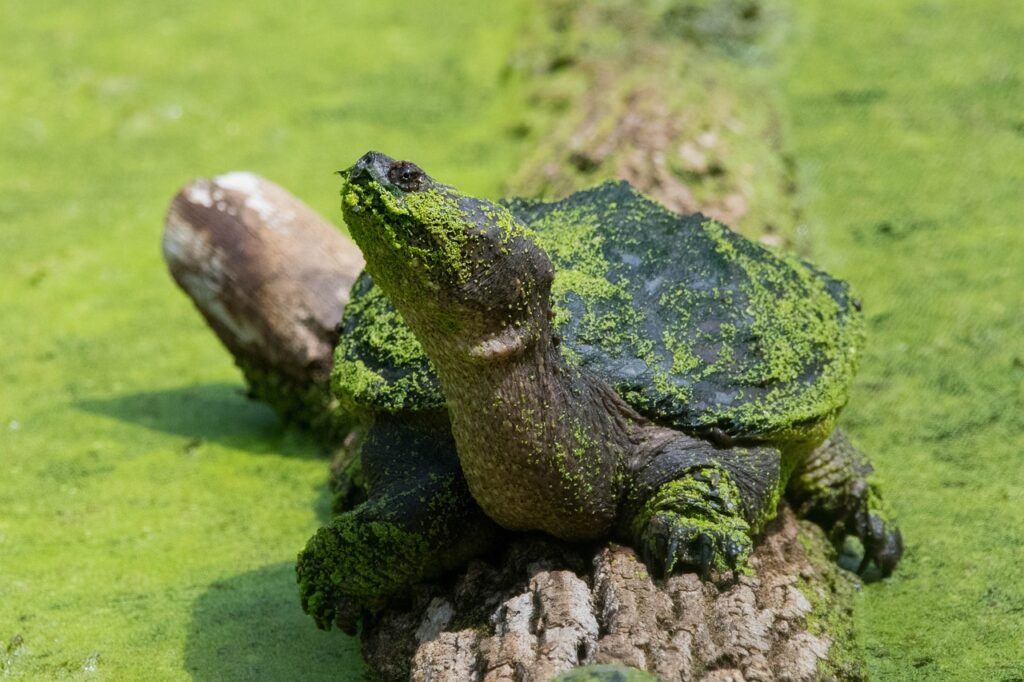
Life Cycle and Reproduction
Sexual Maturity
Snapping turtles reach sexual maturity at different ages, with males typically maturing before females. In general, male snapping turtles become sexually mature between 7 to 10 years old, while females may take longer, usually reaching maturity between 10 to 15 years old. Size is also a determining factor, with males reaching sexual maturity when their carapace lengths are around 6 to 8 inches (15 to 20 cm) and females at approximately 10 to 12 inches (25 to 30 cm).
Courtship and Nesting
During the breeding season, male snapping turtles actively court females to initiate the mating process. Males exhibit various courtship behaviors to attract females, including swimming alongside them and nudging their shells. After mating, females will embark on a search for suitable nesting sites, often returning to the same area year after year. They typically prefer sandy or loose soil in close proximity to water bodies for optimal incubation conditions.
Egg Development
Once a nesting site is selected, female snapping turtles dig a hole in the ground using their hind legs. The hole is typically 4 to 8 inches (10 to 20 cm) deep, providing adequate protection and insulation for the developing eggs. Females then lay their eggs, which are white and have a soft, leathery shell. The number of eggs per clutch can vary, with an average range of 20 to 40 eggs. After laying the eggs, the female carefully covers them with soil and vegetation, leaving them to develop on their own.
Incubation Period
The incubation period for snapping turtle eggs can range from 60 to 90 days, depending on environmental conditions, such as temperature. The eggs are susceptible to predation by animals like raccoons, foxes, and skunks, leading snapping turtles to lay multiple clutches to ensure successful reproduction. During incubation, the temperature surrounding the eggs plays a crucial role in determining the sex of the hatchlings. Warmer temperatures typically lead to females, while cooler temperatures tend to produce males.
Hatchlings
When the incubation period is complete, the hatchlings inside the eggs will begin to emerge. Using an egg tooth, a small protuberance located on their snout, they break through the shell. The hatchlings often emerge together and instinctively make their way to the nearest water body, guided by the reflection of sunlight on the water’s surface. This journey can be perilous, as they are vulnerable to predation during their migration. Only a small percentage of hatchlings survive to reach adulthood due to natural hazards and predation.
Predators and Threats
Natural Predators
Snapping turtles have a variety of natural predators throughout different stages of their life cycle. As hatchlings, they are particularly vulnerable to predation from numerous animals, including raccoons, skunks, snakes, birds, and even larger fish. In adulthood, snapping turtles have fewer natural predators due to their size and the protection provided by their shells. However, they can still face threats from larger mammals like coyotes, bears, and alligators, as well as some birds of prey.
Human Impact
While snapping turtles have naturally evolved to face predation pressures, numerous human-induced factors have significantly impacted their populations. Human activities have resulted in habitat degradation, pollution, illegal hunting, and roadkill incidents, all of which pose significant threats to snapping turtles. Increased human interaction and disturbance in their habitats can also disrupt their natural behavior and contribute to stress in these reptiles.
Habitat Loss
Habitat loss is a major threat to snapping turtles. As human populations expand and develop, wetlands and habitats that are crucial for their survival are often degraded or destroyed. Wetland drainage for agricultural purposes, urbanization, and the construction of infrastructure have drastically reduced the availability of suitable habitats for snapping turtles. Loss of these habitats restricts their ability to find food, reproduce, and complete their life cycles successfully.
Pollution and Contamination
Pollution and contamination of water bodies pose severe threats to snapping turtles. Runoff from agricultural activities, industrial pollution, and the improper disposal of waste can introduce harmful chemicals and toxins into their ecosystems. These pollutants can accumulate in the turtles’ bodies, leading to detrimental health effects, including organ damage and compromised immune systems. These pollutants also impact the availability and quality of their prey, further jeopardizing their survival.
Illegal Wildlife Trade
Snapping turtles face the threat of illegal wildlife trade due to their size, exotic appearance, and use in traditional medicine and culinary practices. Some individuals illegally capture and trade snapping turtles as pets or for their body parts. This illegal activity contributes to the decline of snapping turtle populations in certain regions, as the removal of individuals from the wild disrupts their ability to reproduce and maintain healthy populations.
Conservation Efforts
Numerous conservation efforts are underway to protect and conserve snapping turtles. National parks, wildlife reserves, and protected areas play a crucial role in preserving suitable habitats and allowing snapping turtle populations to thrive. Additionally, public education and awareness initiatives are essential in promoting responsible behavior and respect towards snapping turtles and their habitats. Research and monitoring efforts are also ongoing to better understand the ecology, behavior, and conservation needs of snapping turtles to inform effective conservation strategies.
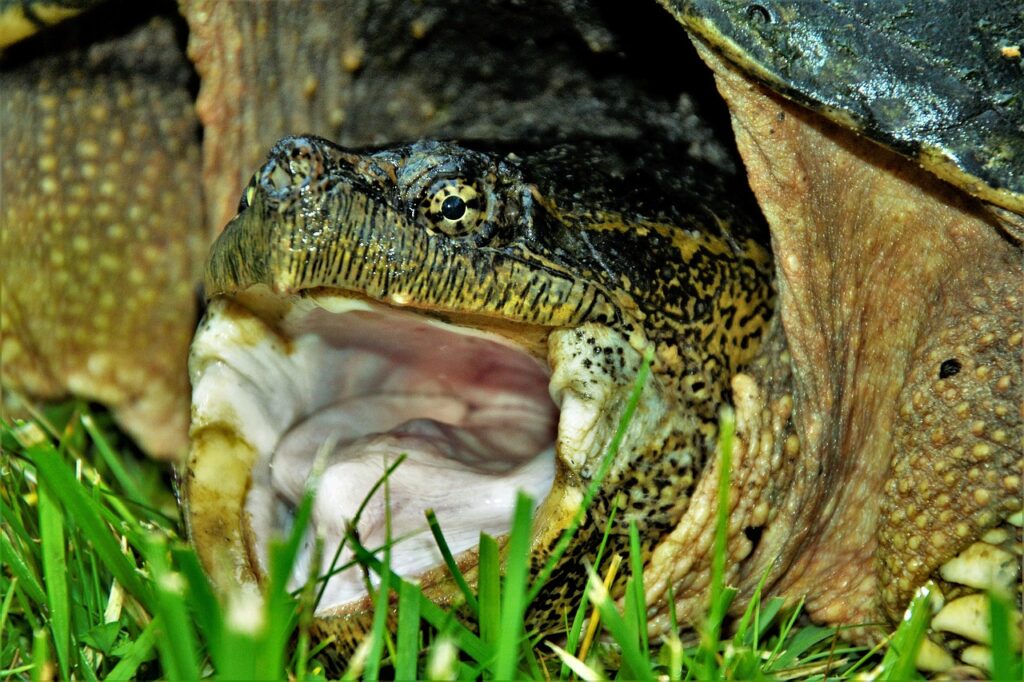
Interesting Facts about Snapping Turtles
Ancient Lineage
Snapping turtles belong to an ancient lineage of reptiles with a history dating back millions of years. Fossils of snapping turtles found in North America are estimated to be over 70 million years old, showcasing their long-standing presence on Earth. These resilient creatures have survived multiple extinction events and have remained relatively unchanged throughout their evolutionary history.
Long Lifespan
Snapping turtles are known for their impressive lifespans, with individuals often surpassing several decades. While it is challenging to determine the exact age of a snapping turtle, they have been known to live for over 50 years in the wild. Some individuals have even been recorded to live beyond 100 years. The combination of a slow growth rate, delayed sexual maturity, and robustness contributes to their longevity.
Remarkable Healing Abilities
Snapping turtles possess remarkable healing abilities that allow them to recover from injuries and wounds. They have a unique immune system that enables them to resist infections and heal quickly. Their ability to regenerate damaged tissues and repair wounds contributes to their survival in a variety of environments, where injuries and encounters with predators are inevitable.
Adaptability
One of the remarkable features of snapping turtles is their adaptability to various habitats and environments. They can be found in both freshwater and terrestrial ecosystems, thriving in diverse conditions. Snapping turtles can tolerate a wide range of water temperatures, salinity levels, and water qualities, ensuring their survival in different regions and climates. Their ability to adapt to changing environmental conditions is a testament to their resilience as a species.
Aquatic Ambush Predators
Snapping turtles are renowned for their ambush hunting strategies. They often lie motionless on the water bottom or partially submerged, blending in seamlessly with their surroundings. Their ability to remain perfectly still for extended periods allows them to surprise unsuspecting prey that ventures too close. With lightning-fast reflexes and powerful jaws, snapping turtles swiftly strike, capturing their prey in an unexpected attack.
Handling and Safety Precautions
Cautionary Approach
When it comes to interacting with snapping turtles, a cautionary approach is essential. Snapping turtles are best observed from a safe distance, as their aggressive nature and powerful jaws pose a potential danger. It is crucial to respect their personal space and avoid any unnecessary risks. Situations involving injured or distressed snapping turtles should be left to professionals with the proper expertise to handle and care for them.
Expert Guidance
If you encounter a snapping turtle in need of assistance or have concerns about its safety, it is advisable to seek help from wildlife professionals or local authorities. Trained individuals have the necessary knowledge and experience to handle snapping turtles safely and responsibly. They can provide expert guidance on how to address the situation without jeopardizing the well-being of both humans and the turtles.
Avoiding Contact
To mitigate the risk of snapping turtle bites or injuries, it is best to avoid direct contact with these reptiles. In the wild, maintain a respectful distance and observe them from afar, appreciating their beauty and unique characteristics. If you encounter a snapping turtle on land, provide it with the space it needs to move freely and return to its watery habitat without obstruction.
Snapping Turtle Bites
Snapping turtle bites are known for their strength and can cause significant injury. It is crucial to exercise extreme caution and avoid any behavior that may provoke snapping turtles. Do not attempt to handle or provoke them in any way, especially if they feel threatened or cornered. In the event of a bite, seek immediate medical attention as bacterial infections can occur due to the presence of bacteria in a snapping turtle’s mouth.
Proper Handling Techniques
If there is a need for human intervention, such as assisting a snapping turtle in crossing a road, it is safest to employ proper handling techniques. Thick gloves and long tools, like a shovel or broom, can be used to help gently guide the turtle. Care should be taken to avoid grabbing the turtle by its tail or hind legs, as this can injure the reptile. Additionally, always support the turtle’s weight properly, ensuring that it is not excessively stressed or injured during the process.
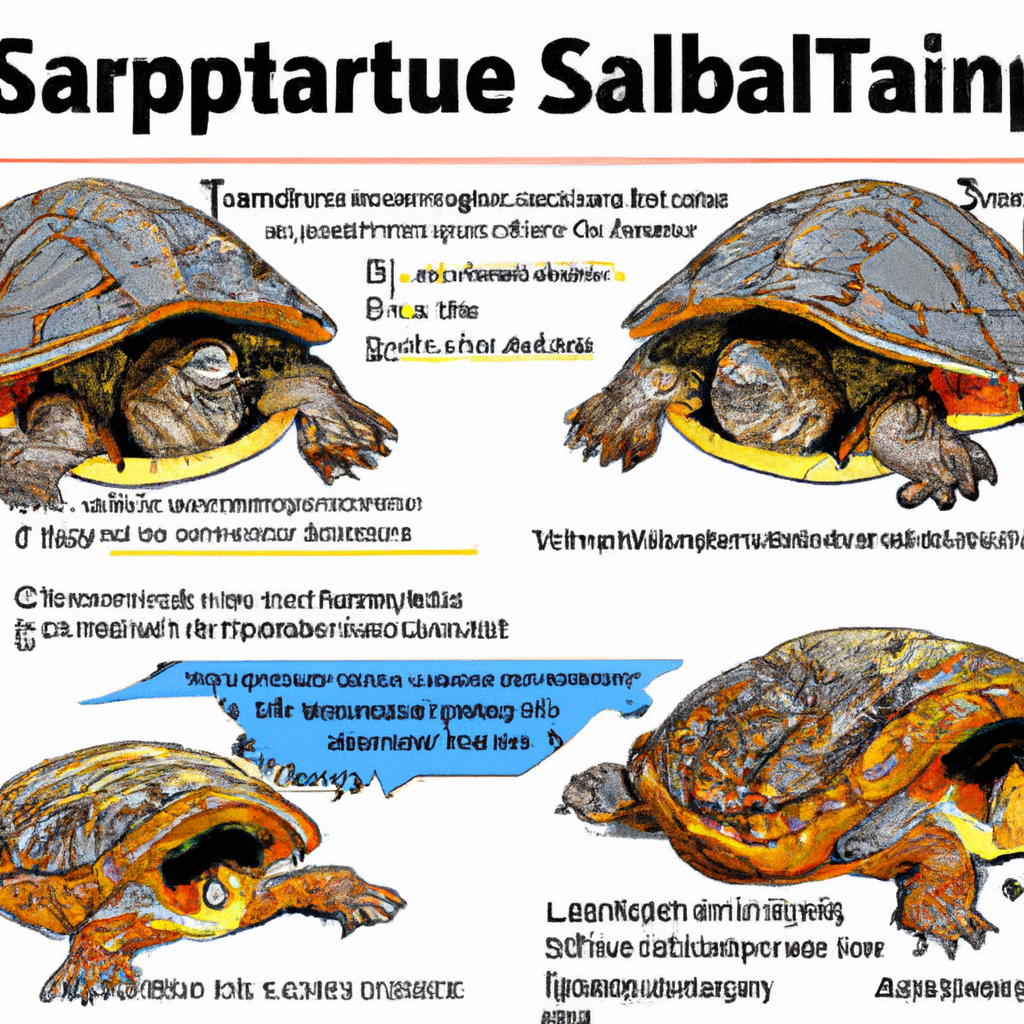
Interaction with Humans
Fishing Accidents
Snapping turtles can occasionally become unintentionally entangled in fishing gear, such as lines and hooks. If you encounter a snapping turtle with fishing gear, it is important to exercise caution and prioritize safety. If possible, contact local authorities or wildlife rescue organizations to assist in safely freeing the turtle. Attempting to remove the gear without proper equipment and knowledge can lead to further injury for both the turtle and humans involved.
Negative Encounters
Negative encounters between humans and snapping turtles can occur when individuals do not exercise caution or respect the turtle’s space. Disturbing nesting sites, capturing turtles without proper permits, or engaging in aggressive behavior towards snapping turtles is not only harmful to the turtles but also illegal in many jurisdictions. By adopting a responsible and educated approach, we can minimize negative encounters and promote harmonious coexistence.
Educational Value
Snapping turtles have significant educational value, allowing us to learn more about the natural world and the importance of conservation. Observing and studying them in their natural habitats can provide insights into their behavior, ecology, and interactions with other organisms. Educational programs and initiatives that promote responsible wildlife viewing and environmental stewardship can foster awareness and appreciation for these awe-inspiring creatures.
Keeping Snapping Turtles as Pets
Keeping snapping turtles as pets requires careful consideration and adherence to local regulations. Snapping turtles are not suitable pets for everyone due to their specialized needs and specific habitat requirements. Caring for snapping turtles in captivity can be challenging, requiring large enclosures with access to both water and land, as well as a proper diet and suitable environmental conditions. It is essential to thoroughly research the care requirements and consult with experts before considering keeping snapping turtles as pets.
Conclusion
Snapping turtles are fascinating creatures with unique physical attributes and behavioral characteristics. From their impressive size and strength to their adaptability and hunting prowess, snapping turtles exemplify the wonders of the natural world. However, their populations face numerous threats due to human activities and habitat degradation. By promoting awareness, responsible interaction, and conservation efforts, we can contribute to the preservation and appreciation of these remarkable reptiles for generations to come.
